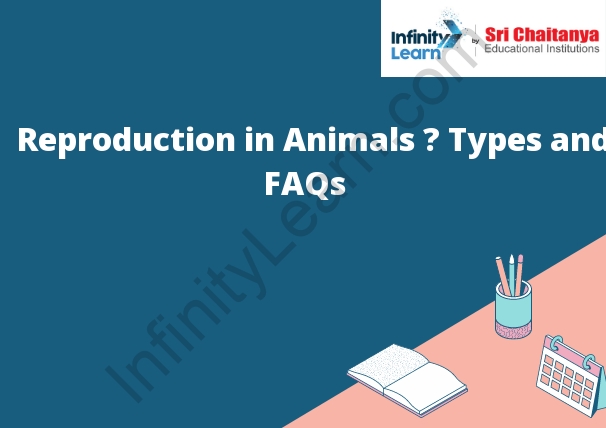Table of Contents
Reproduction in Animals Introduction:
Asexual and sexual reproduction are two methods of producing offspring. Asexual reproduction is a process where a new organism is created from a single parent without the need for a mate. Sexual reproduction, on the other hand, involves the fusion of two gametes (sex cells) from different parents to create a new organism. The gametes are produced by the male and female reproductive organs located in the reproductive system. The male reproductive system produces sperm in most animals, while the female reproductive system produces eggs. The sperm and eggs unite in the process of fertilization to create a new organism. Fertilization usually occurs inside the female reproductive system and outside the body (e.g., in a petri dish).
The main difference between asexual and sexual reproduction is the number of parents involved. In asexual reproduction, there is only one parent, while in sexual reproduction, there are two parents. Asexual reproduction is a more straightforward process and is often faster and more efficient than sexual reproduction. This is because it does not involve the complex fertilization process, which can be difficult and risky. However, sexual reproduction produces more genetic variation, which is important for survival in a changing environment.

Types of Animal Reproduction
Sexual reproduction is how organisms make copies of themselves by combining genetic material from two different sources. This process requires two parents, each of which contributes half of the genetic material in the new organism.
Asexual reproduction is how organisms make copies of themselves without combining genetic material from two different sources. This process requires only one parent, who contributes all of the genetic material in the new organism.
Sexual Reproduction in Flowering Plants
Sexual reproduction in flowering plants involves fusing two reproductive cells, called gametes, to produce a new organism. The gametes are produced by the male and female reproductive organs, the stamen and pistil, respectively.
When a pollen grain lands on the stigma of a pistil, it germinates and grows a long tube down the style to the ovules at the base of the pistil. The sperm cells within the pollen grain travel down the tube to the ovules, where one of the fuses with the egg cell to form a zygote.
The zygote divides to form a seed, which grows into a new flowering plant.
Asexual Reproduction
Asexual reproduction is a process by which new organisms are created without the fusion of gametes. This can be done through various methods, including binary fission, budding, and fragmentation.
Cloning
is the process of creating an identical copy of a biological entity. Cloning is achieved through a process called somatic cell nuclear transfer. In somatic cell nuclear transfer, the nucleus of a donor cell is transferred into an enucleated egg cell. The egg cell is then stimulated to divide, and the resulting embryo is implanted into a surrogate mother.
The first cloned mammal was Dolly the sheep, who was cloned from a single cell taken from another sheep’s udder. Dolly was born in 1996 and died in 2003. Since then, scientists have cloned various other mammals, including cows, pigs, and mice.
Reproduction in Human Beings
Reproduction in human beings is a process by which new individuals are created from their parents. It is an important process because it allows for the continuation of a species.
There are two types of reproduction in humans: sexual and asexual. Sexual reproduction is the process of combining the genetic information from two individuals to create a new individual. Asexual reproduction makes a new individual without connecting genetic information from two individuals.
Sexual reproduction is the more common type of reproduction in humans. It involves the combination of genetic information from two individuals to create a new individual. This process begins when the male and female sex cells, or gametes, fuse. The fusion of the gametes creates a unique individual, called a zygote.
The zygote begins to divide, and it becomes more and more complex as it divides. Eventually, it becomes a fetus and then an infant. The infant is ultimately born and begins to produce its gametes.
Asexual reproduction is less common than sexual reproduction in humans. It involves the creation of a new individual without combining genetic information from two individuals. This process begins when a single cell divides to create two new cells. These new cells then divide to create four new cells, and so on.
Asexual reproduction can occur through a process called cloning. Cloning involves creating an exact copy of an individual. This can be done by extracting DNA from the individual.
Male Reproductive System
- The male reproductive system includes the penis, the scrotum, the testicles, the seminal vesicles, the prostate gland, and the Cowper’s gland.
- The penis is the external organ of the male reproductive system. It is used for urination and sexual reproduction. The penis comprises three parts: the root, the body, and the glans. The root is the portion of the penis attached to the pubic bone. The body is the main portion of the penis. The glans is the head of the penis. The penis is covered by the foreskin, a loose piece of skin.
- The scrotum is a sac-like structure that hangs below the penis. It contains the testicles. The testicles are two oval-shaped organs that produce sperm and testosterone.
- The seminal vesicles are two small tubes that produce semen. Semen is a fluid that contains sperm and other substances.
- The prostate gland is a small, walnut-sized gland that produces a fluid that helps to transport sperm.
- The Cowper’s gland is a small, pea-sized gland that produces a fluid that lubricates the urethra and the penis.









